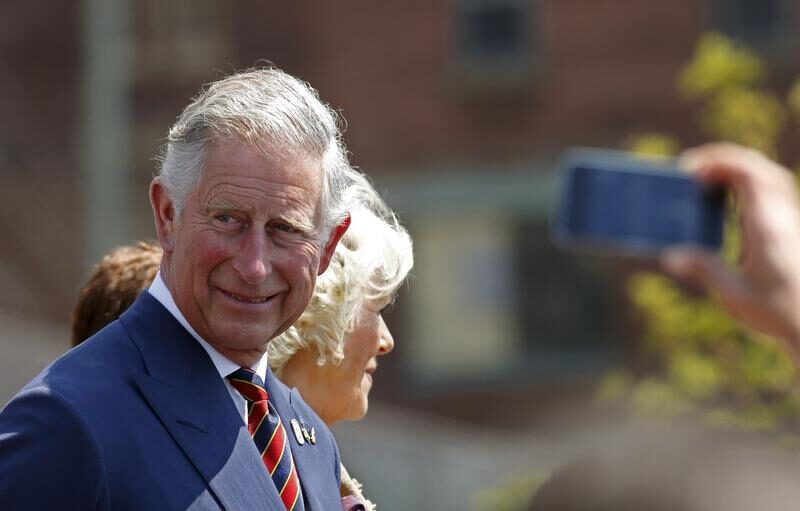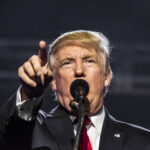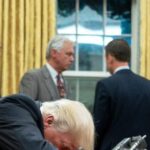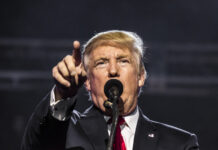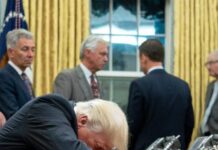King Charles III made history on Thursday, October 23, 2025, as the first British monarch to publicly pray with a pope in nearly 500 years, joining Pope Leo XIV in the Sistine Chapel at the Vatican for a service that broke centuries of religious division.
The 76-year-old king and Queen Camilla arrived in Rome on Wednesday evening, touching down at Ciampino Airport, where British Ambassador to the Holy See Christopher Trott greeted them. They stayed at Villa Wolkonsky, a 19th-century estate that serves as the official residence of the British ambassador.
Thursday morning brought a state welcome at the Apostolic Palace with the Swiss Guard providing a guard of honor as a band played both countries’ national anthems. Queen Camilla wore a traditional black lace mantilla, a sign of respect during the papal audience.
The king and queen met Pope Leo XIV for the first time since his election in May 2025. Charles gave the pontiff a large silver photograph and an icon of St. Edward the Confessor, the 11th-century English king. Pope Leo returned a scale replica of the Christ Pantocrator mosaic from Sicily’s Norman Cathedral. The Vatican said the talks were cordial and that they discussed environmental protection and fighting poverty. The two leaders also met with Cardinal Pietro Parolin, the Holy See’s Secretary of State, who made history himself as the first papal envoy in 500 years to attend a British coronation when he attended the 2023 coronation at Westminster Abbey.
Under Michelangelo’s famous frescoes in the Sistine Chapel, Charles and Pope Leo prayed together for 30 minutes in a service focusing on protecting the environment, a cause the King has championed for decades. Archbishop of York Stephen Cottrell joined Pope Leo in leading the service. Charles, who serves as Supreme Governor of the Church of England, sat to the Pope’s left, near the altar, on a golden throne. The two religious leaders bowing their heads together was meant to show reconciliation and spiritual renewal.
Music played a big role in the ceremony. Choirs from St. George’s Chapel at Windsor Castle and the Chapel Royal performed alongside the Sistine Chapel choir. The British singers performed “If ye love me” by Thomas Tallis, a composer from the 1500s. The choice mattered because Tallis lived through the split from Rome caused by King Henry VIII, but kept working despite never giving up his Catholic faith.
After the chapel service, Charles and Camilla went to the Basilica of Saint Paul Outside the Walls, where the King received a new title: Royal Confrater of the Abbey of Saint Paul. They entered through the Holy Door, which only opens every 25 years during a Jubilee Year. Cardinal James Michael Harvey talked about the strong historical ties between the basilica and England. He mentioned the important 1966 meeting between Pope Paul VI and the Archbishop of Canterbury, Michael Ramsey, which marked the first official dialogue between the two churches since the Reformation. During that meeting, Paul VI memorably placed his episcopal ring on the archbishop’s finger.
The Royal Confrater title was approved by Pope Leo XIV and represents hope and welcome, Cardinal Harvey explained. Charles sat on a specially made throne with the Latin words “Ut unum sint” — meaning “That they may be one” — which will stay in the basilica permanently for future use. The basilica has a long connection to England’s monarchy. After Roman missionaries arrived in England in the 6th and 7th centuries, Saxon kings helped pay for the upkeep of the apostles’ tombs in Rome. By the late Middle Ages, English kings were seen as protectors of the Basilica of St. Paul. That tradition stopped with the Reformation.
Charles gave Pope Leo two honors in return: Papal Confrater of St. George’s Chapel at Windsor Castle and Knight Grand Cross of the Order of the Bath. The Pope also made Charles and Camilla a knight and dame of the Order of Pius IX. The visit happened during the 2025 Papal Jubilee, a tradition held every 25 years for forgiveness and renewal. Charles strongly wanted to visit the Vatican during this Holy Year.
The split between Britain’s monarchy and the Catholic Church goes back to King Henry VIII in the early 1500s. England broke from the Catholic Church in 1534 after the Vatican refused to end Henry’s first marriage. Married to Catherine of Aragon for 18 years, Henry had six children, but only his daughter Mary survived. Desperate for a male heir and wanting to marry Anne Boleyn, Henry needed approval from Pope Clement VII, who said no. To get the divorce he wanted, Henry started the Church of England and made himself its supreme governor.
Charles’s mother, Queen Elizabeth II, was the first British monarch since the Reformation to officially visit the Holy See, meeting Pope John XXIII in 1961. Elizabeth met four popes during her life, but never prayed publicly with any of them. Charles and Camilla were supposed to visit in April, but the trip was delayed because Pope Francis was sick. They went ahead with their Italy trip and privately visited the dying pontiff two weeks before he passed away.
The visit was meant to show moral authority and spiritual leadership. However, it came as the royal family faces intense scrutiny over Prince Andrew’s ties to convicted sex offender Jeffrey Epstein. The scandal heated up after excerpts from a book by Epstein accuser Virginia Roberts Giuffre were published. Giuffre, who died by suicide in April at age 41, wrote that Andrew acted as though having sex with her “was his birthright.” Days before the Vatican visit, Prince Andrew dropped his Duke of York title. On October 17, Andrew said the continued accusations distract from the work of the king and the royal family. The decision followed newspaper reports of an email Andrew reportedly sent to Epstein in February 2011, contradicting his 2019 BBC claim that he stopped talking to Epstein in 2010.
Despite past troubles, relations between the Vatican and the British monarchy today are warm and mutually respectful. Church historian Diarmaid MacCulloch of the University of Oxford said there is genuine significance in the Papacy’s formal favor toward Charles.

